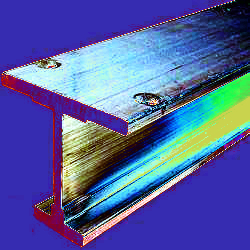Green steel credit questioned
 The Federal Government is backing upgrades at a coal-fired steel plant.
The Federal Government is backing upgrades at a coal-fired steel plant.
Climate Change Minister Chris Bowen has allocated $137 million in taxpayer funds to BlueScope Steel to facilitate a significant upgrade to the blast furnace at the Port Kembla steelworks in New South Wales.
The investment forms part of a broader $1.15 billion initiative to rejuvenate the ageing infrastructure, ensuring its operation until at least 2046, despite ongoing environmental and climate change concerns.
BlueScope, Australia's premier steel manufacturer, will use the grant to enhance an existing furnace, employing conventional coal and iron ore processing methods.
The industry and government both acknowledge that low-carbon steelmaking technologies, while on the horizon, remain over a decade away from commercial viability.
The steel sector, responsible for approximately 8 per cent of global carbon emissions, faces significant challenges in reducing its environmental footprint.
Climate Change Minister Chris Bowen says the funding is a necessary step to “lock in steelmaking in Australia for the next hundred years”, in a global landscape where no country has yet transitioned to fully commercialised, new-technology steel production.
The investment, drawn from the government's Powering the Regions Fund, is designed to ensure the competitiveness of Australian industry as it navigates towards lower emissions under the safeguard mechanism policy. This policy mandates a 4.9 per cent annual reduction in emissions for the country’s top 215 emitters, including BlueScope.
Parallel to BlueScope's efforts, the Whyalla steel plant in South Australia, owned by British billionaire Sanjeev Gupta, has been granted $63 million to aid its shift towards greener steel production using electric arc furnace technology.
This method, which repurposes scrap metal, is a departure from traditional coal-based methods and is seen as a step towards sustainable manufacturing practices.
Critics, however, have been voicing their concerns.
The Climate Capital Forum and other environmental advocates argue that the government's financial support for BlueScope's coal-based operation is a missed opportunity to advance more rapidly towards zero-emission steel production.
They highlight international movements towards greener steelmaking solutions, like Sweden's H2 Green Steel and Japan's JFE Steel, as examples of the ambitious strides Australia could be taking.
Defending the grant, Bowen has cited the inclusion of emissions-reducing features in the furnace upgrade, such as a top gas recovery turbine and the potential for increased use of recycled materials and slag in cement production, projecting an offset of more than 400,000 tonnes of cement emissions annually.
Still, critics describe the decision as a reinforcement of “mediocre” industry standards rather than a bold pivot towards innovation.
As the debate rages on, the juxtaposition of BlueScope's commitment to traditional steelmaking methods against the backdrop of emerging low-carbon technologies continues to stir controversy.








 Print
Print